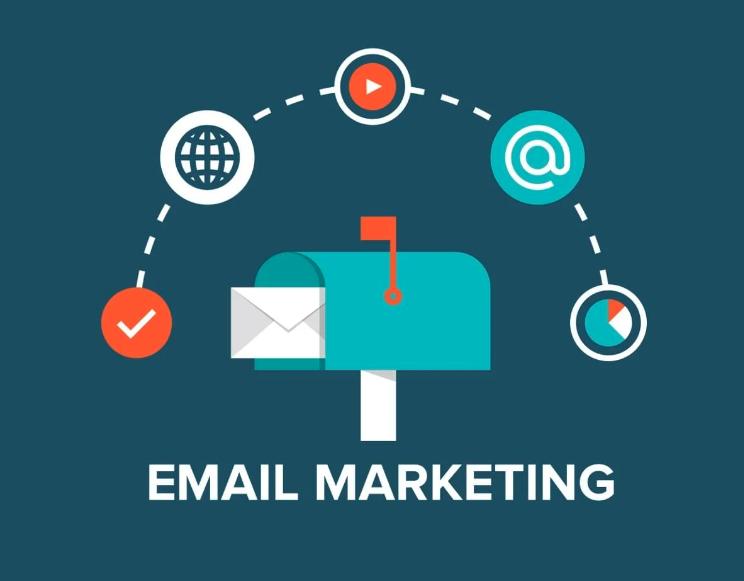In an increasingly crowded and challenging marketplace of businesses competing for the attention of prospects, companies who take more time developing relationships with customers are coming out on top.
This all starts with demand generation.
Demand generation is the creation and development of top of funnel awareness and interest in a company’s products and services that have the potential to lead to future sales.
One key element of demand gen is email marketing. Email marketing is a powerful tool in the marketer’s arsenal for demand generation but many commit the same common mistakes or fail to make the most of its potential.
Here are 5 tips for maximizing the demand generation capabilities and overall effectiveness of your email marketing campaign:
1. Optimize Subject Lines
As previously mentioned, the key to demand generation is capturing the interest of prospects. For email marketing, this starts with the subject line.
Keep the subject line snappy and relevant to the function of the email.
According to MailChimp the length of an ideal subject line should not exceed 9 words (or 60 characters).
The best subject lines spark curiosity by creating an open loop that subconsciously leads the recipient to open the email and find out more.
Mentioning the email’s offer in some way is another good tactic to motivate readers to open emails, as well as including the recipient’s first name. This gives the email a personal feel as well as grabbing their attention.
Additional features such as humor or emojis should be used carefully and only when appropriate for the target audience to avoid open rates dropping off or emails being dismissed entirely.
2. Carefully Craft Your Content
Next, is the actual content of the email.
Be humble and if an email is the first point of contact between you and a prospect, acknowledge it.
Addressing the uncomfortable nature of an introductory email and the potential negatives present at the beginning can help to neutralize them and combat the wrong assumptions being made.
Writing in a more conversational tone, when appropriate, and focusing on informing prospects rather than pushing for a sale, can also diffuse awkwardness and relieve sales pressure.
As this is not a very common strategy, it helps to pique the curiosity of the reader far more than a block paragraph of statistics of past successes.
Whilst it is important to include credibility, the emphasis should be more on what you can do for the prospect, rather than how amazing you are.
Removing yourself from the email as much as possible is another successful tactic for maintaining interest.
Referencing the recipient more frequently than the sender makes them feel prioritized and avoids the email becoming too centered on the needs of the salesperson.
In terms of strategy, although automated email cadences are time-savers, personalization is crucial. Leave important emails such as first emails and emails attempting to regain interest unautomated.
When personalizing an email, demonstrate time spent getting to know the prospect as an individual. Not only does this indicate dedication on the sender’s part but it also makes the reader feel valued.
Remember, the more successful your emails are in achieving this, the more likely it is that they will be forwarded to others, boost demand generation, and encourage long-lasting relationships with prospects.
3. CTAs
As calls to action (CTAs) are the main focus of interaction for emails they require insight and strategy to avoid becoming counterproductive or leading to the failure of an entire email.
Each call to action should be customized with the recipient, function of the email, and the type of email being sent in mind.
For example, a regular email such as a newsletter should have different CTAs than a first-time email designed to establish contact.
Limit the number of calls to action in an email and make them low-friction. This means that they are not demanding of the prospect and focus on determining interest in a free and useful resource.
Featuring fewer CTAs keeps the function of the email clearer and avoids pushing leads away, encouraging demand generation.
Rather than pushing for booking meetings or making sales from the beginning, calls to action that focus on the prospect’s needs and interests are more likely to encourage results.
Interaction with CTAs can also be encouraged by embedding them as a button format in emails. This also helps to lower the amount of text in an email.
4. Offer Valuable Supporting Content
Emails are a fantastic vehicle for delivering content straight to its intended audience.
Providing prospects with a variety of content is a powerful way of nurturing leads and encouraging demand gen by sparking awareness and interest in a company.
The best way to distribute content with emails is by first establishing and confirming a prospect’s interest with offers that highlight the potential benefits they stand to receive.
Any offer made can be enhanced with credibility and should be clear and appealing to its target audience. If an offer is too vague your content is unlikely to perform well. After all, the goal is for recipients to consume content and develop an interest in your company.
When choosing which content to create and share, make sure that it matches and supports the function of the email and action you want prospects to take.
Content format and length are also important and should reflect the preferences of each target audience.
The topic of content should also be relevant to the interests of your target audience to effectively drive demand generation by increasing the number of visitors coming to your site.
Map out content creation with topics of interest across multiple channels that can be distributed via email to support longer demand gen strategies.
5. Filter, Test and Adjust
It is imperative to consistently clean and refine contact lists to make sure that unresponsive recipients are removed or sent the correct emails to try and win back their interest.
Lists can also be managed and organized using marketing segmentation methods to establish key groupings within target audiences that can inform email and content creation.
As with any marketing strategy, making adjustments based on feedback from campaigns is a necessary process to ensure that results are consistent and improve.
Apart from tracking various metrics related to the goals of your email marketing campaign, testing is another method of ensuring objectives are met.
Determining which copy and design elements are most successful in driving demand generation is often a complex process that can be facilitated with A/B testing.
By running variations simultaneously, the most successful features can be identified and applied to current and future campaigns.
Final Thoughts
Creating email marketing that drives demand generation is a multi-faceted process that revolves around a clear understanding of target audiences, the needs, problems, and the solutions they are looking for.
Demonstrating this knowledge to prospects in a friendly and relatable manner that is customer-centric, rather than focusing on making a sale, can help to drive demand generation and the results you’re looking for from your email marketing campaigns.
Writer’s Bio
Joseph Saunders is an experienced content writer at INFUSEmedia who produces a variety of high-quality B2B content spanning from articles and whitepapers to social media and witty sales content. Working alongside the rest of the content team, Saunders helps to ideate new content ideas, prepare content for design and integrate SEO features into copy without losing its informative quality.


